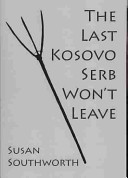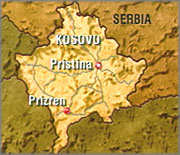April 7, 2012

Cover of Gaines' A Lesson Before Dying
Returning to our discussion of Gaines’ Lesson, I said that, even as they prepare the final version of their Salesman papers, they would need to draw on their journaling to begin planning their essays on Gaines’ novel. To help them begin this process, I passed out their assignment sheet, which featured the following subjects as possible focuses for their essays:
- The effects of racism on the American justice system
- The relationship of liberty to literacy
- The love story of Vivian and Grant
- Grant: the man and the teacher
- Jefferson: His transformation from “hog” to man
- Reverend Ambrose, Grant, and the dynamics of faith and doubt
- The women in Gaines’ novel
I then suggested that we spend our last hour talking about approaches to one or two of these overlapping subjects, focusing particularly on chapters 20-31, the ones we had not discussed. By common consent, we began with “Grant: the man and the teacher.” Reminding students that we saw a new Grant emerging at the end of our last session, I asked what evidence they saw of Grant’s effective teaching. Kadrije mentioned the radio that Grant bought for Jefferson and his defense of this purchase in a confrontation with Reverend Ambrose, who calls it a “sin box” (181). “So how can we consider a radio a teaching device?” I asked Kadrije. She responded by reading key quotes from Grant’s defense: “I found a way to reach him for the first time….He wants something of his own before he dies….The only thing that keeps him from thinking he is not a hog is that radio” (182, 183).
After commending Kadrije on her insights and evidence, I asked if anyone else could uncover some effective teaching that emerges, rather ironically, from his conflict with Reverend Ambrose. “You recall,” I said, “that Ambrose wants Grant to teach Jefferson to pray, to kneel; Grant refuses, saying that he has tried to teach him to stand. But what kinds of teachings does Grant share with Jefferson in the meetings that follow?” Edita answered, referring to Grant’s lesson about heroism, his teaching Jefferson to be a hero; she then read some key quotes from the lesson: “A hero does for…people he loves because he knows it would make their lives better….You could give something to Emma, to me, to those children in the quarter” (191). “Can you tell me what Grant has to say about Mr. Farrell’s slingshots?” I asked her. “It’s a metaphor,” Edita explained; “Farrell turns rough wood into a beautiful slingshot handle; he wants Jefferson to “decide to become something else” (193). “And what irony does this lesson have, given Grant’s recent fight with the Reverend?” “Grant speaks like a pastor, teaching about love,” Edita answered. “And what does Grant tell Jefferson as they walk around the day-room, Jefferson in shackles?” Edita answered with another quotation from Grant: “I think it’s God that makes people care for people” (223). Naturally, I had lots of praise for Edita, too.
Delighted by these insights, I asked the class what other brilliant teaching idea Grant has just before he begins this ‘sermon’ about love. Several answered with “the pencil and diary.” I then asked how this teaching strategy works, and how it relates to the “liberty and literacy” subject on their assignment sheet. “What do we learn about Jefferson from his journaling, besides the obvious fact that he had minimal literacy skills? What does he write about?” These questions led to an array of answers: Jefferson’s dream about the execution, his feeling that God “just work for wite folks” (227), his gratitude to his teacher, his tearful response to the children who bring him pecans and kisses and marbles, the kisses he gives to Emma at her last visit, his admission that he “been shakin an shakin but im gon stay strong” (233). I then asked what they would call a person who admits his fears but faces them, a person who can show tenderness to children, compassion for his godmother, and gratitude to the man who made him “think im somebody” (232). Several answered instantly: “a man.” “Yes,” I responded, “so what does Gaines suggest here about the power of writing? Jefferson still wears chains, he still will die, but what has he achieved?” “Freedom,” Fidan said. “He has escaped the ‘hog’ identity.”
Thanking the class for their thoughtful responses, I encouraged them, as they began to draft on their chosen subject, to think about blending a critical theory or theories with their analysis. For example, I noted that the subject of Jefferson as well as the first two subjects focus on racism and the justice system and on the relationship of literacy to liberty; therefore, these subjects might invite a Marxist reading of the novel, arguing that the injustices of capitalism appear in the arrogance of the ruling class and in their oppression of the proletariat or working class. On the other hand, I said that if they chose to write about Grant, they could take a deconstructive approach, arguing that Grant’s transformation and its effects on Jefferson and the deputy Paul undercut the Marxist critique, showing that capitalist injustices can, eventually, be overcome. Further, I suggested that a paper on Vivian and the other women in the novel would invite a feminist reading, stressing the failed attempts to silence women, and a paper on Grant and Reverend Ambrose could take a psychoanalytic approach, tracing the conflict between the agnostic and the man of faith as a clash between a ‘son’ and a surrogate father/authority figure.















